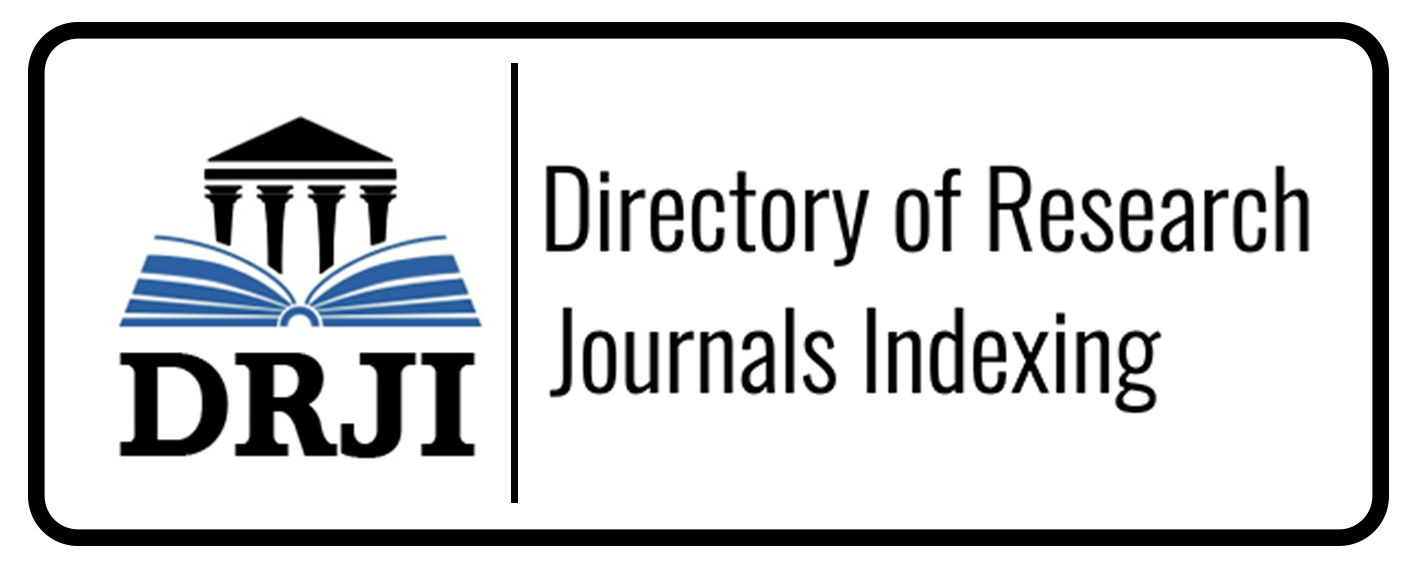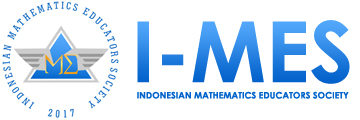Assessing the Suitability of Online Interactive Tutorials (Web-Learning) for Exploring Mathematical Sequences and Series
Abstract
Learning media plays a significant role in enhancing the effectiveness and interactivity of mathematics education. This study aims to evaluate the feasibility of Web-based Mathematics Learning Media on sequences and series for 11th-grade high school students in Tarakan. The research method employed a Research and Development (R&D) approach using the 4D model (Define, Design, Develop, Disseminate). Survey and questionnaire instruments were used to collect data from experts in media design, subject matter experts, and student responses. The evaluation from the media design experts indicated that the learning media had very high feasibility, with an average score of 86.8%. Similarly, the assessment by subject matter experts deemed it highly feasible, obtaining an average score of 92.50%. Student responses to the learning media indicated an acceptable criterion with an average score of 75%. Based on these evaluations, it can be concluded that the web-based learning media is aligned with the development stage and has sufficient feasibility to be used as a mathematics learning tool for sequences and series in 11th-grade Vocation high school in Tarakan. Consequently, it serves as a solution for implementing mathematics education that leverages technological access.
Downloads
References
Abdullah. (2017). Pendekatan dan Model Pembelajaran yang Mengaktifkan Siswa. Edureligia, 1(1), 45–62. https://www.ejournal.unuja.ac.id/index.php/edureligia/article/download/45/41
Alman, A., & Purwanty, W. N. I. (2022). Pengaruh Problem Based Learning Terhadap Kemampuan Pemecahan Masalah Matematika di Kelas IV SD Ypk Lahairoy Yensawai. Jurnal Papeda: Jurnal Publikasi Pendidikan Dasar, 4(1), 55–61. https://doi.org/10.36232/jurnalpendidikandasar.v4i1.2064
Anjani, F., Supeno, & Subiki. (2020). Kemampuan Penalaran Ilmiah Siswa SMA dalam Pembelajaran Fisika Menggunakan Model Inkuiri Terbimbing Disertai Diagram Berpikir Multidemensi. Lantanida Journal, 8(1).
Association for Educational Communications and Technology (AECT). (2020). Definition and Terminology Committee. Retrieved from https://www.aect.org/resources/definition.asp
Carroll, J. M. (2012). Human-Computer Interaction: Fundamentals and Practice. Pearson.
Clark, R. C., & Mayer, R. E. (2016). E-learning and the Science of Instruction: Proven Guidelines for Consumers and Designers of Multimedia Learning. John Wiley & Sons.
Djidu, H., & Jailani. (2016). Aktivitas Pembelajaran Matematika yang Dapat Melatih Kemampuan Berpikir Tingkat Tinggi Siswa. Seminar Nasional Matematika X Universitas Negeri Semarang, 314.
Faradiba, D. F., & Rachmadiarti, F. (2020). Kelayakan Teoritis E-Book Interaktif Materi Ekosistem untuk Melatihkan Keterampilan Berpikir Kritis Siswa Kelas X SMA. Berkala Ilmiah Pendidikan Biologi (BioEdu), 9(2), 179–185. https://doi.org/10.26740/bioedu.v9n2.p179-185
Hadiyanti, R., Kusni, & Suhito. (2012). Keefektifan Pembelajaran Kooperatif Numbered Head Together Terhadap Kemampuan Pemahaman Konsep. Unnes Journal of Mathematics Education., 1(1). https://doi.org/10.15294/ujme.v1i1.262
Hannafin, M. J., & Peck, K. L. (1988). The design, development, and evaluation of instructional software. Macmillan.
Hannafin, M. J., Land, S. M., & Oliver, K. (2013). Open Learning Environments: Foundations, Methods, and Models. Springer.
Hartanto. (2008). Buku Ajar Media Pembelajaran. Bumi aksara.
Henningsen, P., & Moseley, C. (2020). The Software Engineering of Educational Technology. Educational Researcher, 49(3), 151-159.
Heruman. (2013). Model Pembelajaran Matematika di Sekolah Dasar. PT Remaja Rosdakarya.
Höffler, T. N., Leutner, D., & Seidel, T. (2016). Mapping the Multifaceted Dimensions of Multimedia Learning. Learning and Instruction, 41, 1-11.
Iskandar. (2019). Pemanfaatan Media Pembelajaran Berbasis Teknologi dalam Meningkatkan Minat Belajar Peserta Didik Kelas VIII.2 di MTS Negeri Pinrang. Institut Agama Islam Negeri.
ISO. (2019). ISO 9241-210:2019 Ergonomics of human-system interaction — Part 210: Human-centred design for interactive systems. International Organization for Standardization.
Kozma, R. (1994). Will Media Influence Learning? Reframing the Debate. Educational Technology Research and Development, 42(2), 7-19.
Kozma, R. B. (1994). Will media influence learning? Reframing the debate. Educational Technology Research and Development, 42(2), 7-19.
Lesmono Albertus Djoko, Dwiastuti Sefrina Cahaya, W. S. (2014). Pengembangan Media Kinestetik Dalam Pembelajaran. Jurnal Pendidikan Fisika.
Lu, J., & Lawanto, O. (2019). Effects of Visual Representation in Learning Mathematics: A Meta-Analysis. Educational Technology Research and Development, 67(3), 683-705.
Mayer, R. E. (2001). Multimedia Learning. Cambridge University Press.
Mayer, R. E. (2019). Multimedia Learning. Cambridge University Press.
Mayer, R. E., & Moreno, R. (2017). Cognitive Theory of Multimedia Learning. In The Cambridge Handbook of Multimedia Learning (2nd ed., pp. 43–71). Cambridge University Press.
Narifah, Nursalam, & Munirah. (2020). Diagnosis Kesulitan Belajar Peserta Didik Materi Bilangan Bulat di Kelas IV MIN 2 Kota Kakassar. JIPMI, 02(2), 102–115.
Nielsen, J. (2012). Usability 101: Introduction to Usability. Nielsen Norman Group. [Link: https://www.nngroup.com/articles/usability-101-introduction-to-usability/]
Nieveen, N., Handelzalts, A., Voogt, J., & Van Braak, J. (2017). Evaluating the Quality of Educational Design Research. Educational Technology Research and Development, 65(1), 203-227.
Nuraeni, R., Mulyati, S., Putri, T. E., Rangkuti, Z. R., Pratomo, D., Ak, M., Ab, S., Soly, N., Wijaya, N., Operasi, S., Ukuran, D. A. N., Terhadap, P., Sihaloho, S., Pratomo, D., Nurhandono, F., Amrie, F., Fauzia, E., Sukarmanto, E., Partha, I. G. A., … Abyan, M. A. (2017). Pengembangan Media Pembelajaran Interaktif Berbasis Geogebra dengan Model Pengembangan ADDIE (Analusis, Design, Development, Implementation, Evaluation) pada Materi Geometri Kelas XI MIA SMA Negeri 3 Takalar [Universitas Islam Negeri Alaudin Makassar]. In Diponegoro Journal of Accounting (Vol. 2, Issue 1). http://i-lib.ugm.ac.id/jurnal/download.php?dataId=2227%0A???%0Ahttps://ejournal.unisba.ac.id/index.php/kajian_akuntansi/article/view/3307%0Ahttp://publicacoes.cardiol.br/portal/ijcs/portugues/2018/v3103/pdf/3103009.pdf%0Ahttp://www.scielo.org.co/scielo.ph
Nurkholis. (2021). Pendidikan dalam Upaya Memajukan Teknologi. Jurnal Kependidikan, Vo. 1. No.
Nurrita. (2018). Pengembangan Media Pembelajaran untuk Meningkatkan Hasil Belajar Peserta Didik. Jurnal Ilmu-Ilmu Alquran, Hadist, Syari’ah Dan Tarbiyah.
Sari, R. F., & Handayani, L. (2018). The Effect of Mathematics Learning Media and Self-Esteem Toward the Learning Outcome of Grade VII Students. Journal of Physics: Conference Series, 1097(1), 012150.
Sugiyono. (2018). Metode Penelitian Kuantitatif, Kualitatif, fan R&D. Alfabeta.
Tafano. (2018). Peranan Media Pembelajaran dalam Meningkatkan Minat Belajar Mahapeserta Didik. Jurnal Komunikasi Pendidikan.
Trianto. (2007). Model Pembelajaran Terpadu dalam Teori dan Praktek. Prestasi Pustaka.
Willingham, D. T. (2009). Why Don't Students Like School?: A Cognitive Scientist Answers Questions About How the Mind Works and What It Means for the Classroom. Jossey-Bass.
Wulandari, A. P., Salsabila, A. A., Cahyani, K., Nurazizah, T. S., & Ulfiah, Z. (2023). Pentingnya Media Pembelajaran dalam Proses Belajar Mengajar. Journal on Education, 5(2), 3928–3936. https://doi.org/10.31004/joe.v5i2.1074
Yudi. (2012). Konsep Kurikulum dan Kurikulum Pendidilkan Islam. Jurnal Pemikiran Islam, Vol. 37, N.
Yunus, M. M., Salehi, H., & John, S. M. (2012). Technological Pedagogical Content Knowledge (TPACK) - A Conceptual Framework for Practical Teacher Knowledge. The Turkish Online Journal of Educational Technology, 11(4), 148–154. [Link: https://www.researchgate.net/publication/268546219_Technological_Pedagogical_Content_Knowledge_TPACK_-_A_Conceptual_Framework_for_Practical_Teacher_Knowledge
Copyright (c) 2023 Alfian Mucti, Hermansyah Hermansyah

This work is licensed under a Creative Commons Attribution 4.0 International License.



























 JDIME: Journal of Development and Innovation in Mathematics Education (e-ISSN
JDIME: Journal of Development and Innovation in Mathematics Education (e-ISSN 
